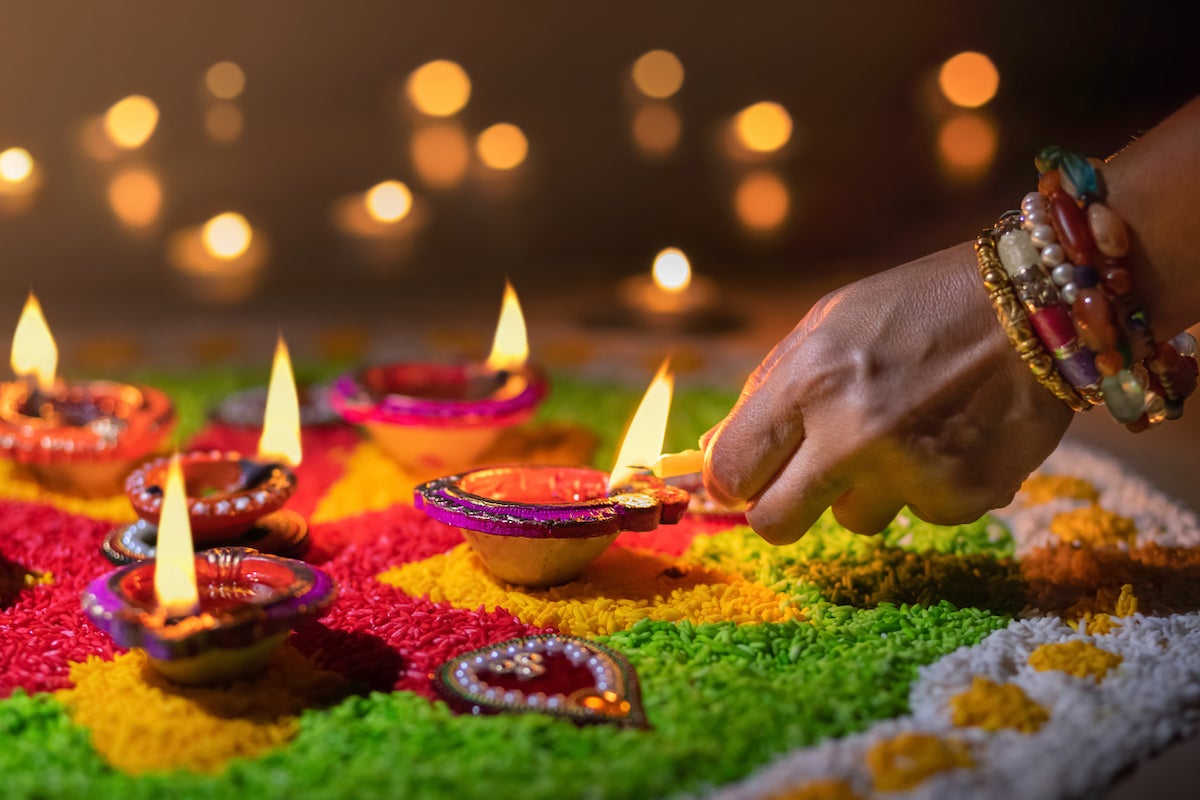This year, Diwali, a five-day festival celebrated by Hindus, Jains and Sikhs, takes place Nov. 10-15 — with the main celebration on Nov. 12. The holiday is typically observed during the Hindu lunisolar month Kartika, which occurs in mid-October to mid-November on the Gregorian calendar and coincides with the Hindu New Year.
“Diwali is known as the festival of lights and is considered as one of India’s most celebrated holiday, (which may or may not have a religious significance for some observers,) similar to Christmas in the United States,” says Maria Contractor, UCF’s Indian Student Association current philanthropy chair and former Diwali director, who is Muslim but has attended Diwali celebrations growing up and while at UCF. “The significance of Diwali is to show how the light can overpower the darkness.”
The name Diwali is derived from the Sanskrit word dipavali, meaning “row of lights.” Since Diwali is so widely celebrated across religious and cultural groups, some aspects of its significance varies. For many people, the celebration is associated with the Hindu goddess of wealth and good fortune, Lakshmi, and the main festive day centers around a puja or pooja (ceremonial worship) in her honor to welcome luck and prosperity.
“(Diwali) celebrations usually contained fireworks, intricate rangoli patterns (designs made on the floor with bright colored sand) and lighting clay lamps called diyas (inside and outside homes),” says Contractor, a data science student. “Diwali typically brings up feelings of content and excitement.”
Generally, the five days of Diwali include:
- Dhanteras: This day involves household cleaning and preparing for upcoming Diwali events and shopping. For some it is also a day of worship for Lakshmi, and it is customary to purchase something precious or gold.
- Choti Diwali: This day honors Krishna’s defeat of the demon god Narakasura. Decorating ones’ home, including hanging lights, is customary.
- Diwali: On the main day of Diwali, an even larger celebration of Lakshmi is observed. Household cleaning, decorating, such as making rangolis, lighting diyas, gathering with family, exchanging gifts, sharing sweets and praying to Lakshmi are common practices.
- Padwa: This day honors Krishna defeated of Indra by lifting the huge Govardhan Mountain. Many people make clay and cow-dung figures to depict the event.
- Bhai Dooj: Inspired by the sibling love shared between Lord Yama and his sister Yami, this is for siblings to honor one another. Sisters often pray for their brothers’ success and well-being and apply a red tilak (a mark typically on the forehead).
Like most celebrations worldwide, food is also a major part of the holiday, especially sweets such as jalebi (a fried bread soaked in syrup) and barfi (a fudge made with condensed milk and other flavors like pistachio).
“The foods that are eaten at Diwali are typically traditional foods, such as samosas (fried pastries with a savory filling, typically potato), biryani (a spiced, mixed rice dish made with or without meat), gulab jamun (fried balls of dough soaked in syrup) and other mithai (Indian sweets),” Contractor says.
No matter your religious affiliation, Contractor says UCF’s Indian Student Association encourages students to learn more about Diwali and to get involved with the organization.
“Celebrating Diwali at UCF has helped me meet new people in my culture (and a chance to) learn about the different aspects of Diwali that I do not typically celebrate with my family,” Contractor says. “Over time, Diwali has evolved from simply being a time for going to celebrations, having a feast, and meeting new friends to understanding the importance of Diwali and how it impacts Indians all around the world. ISA has been a strong part in helping me appreciate my culture.”





